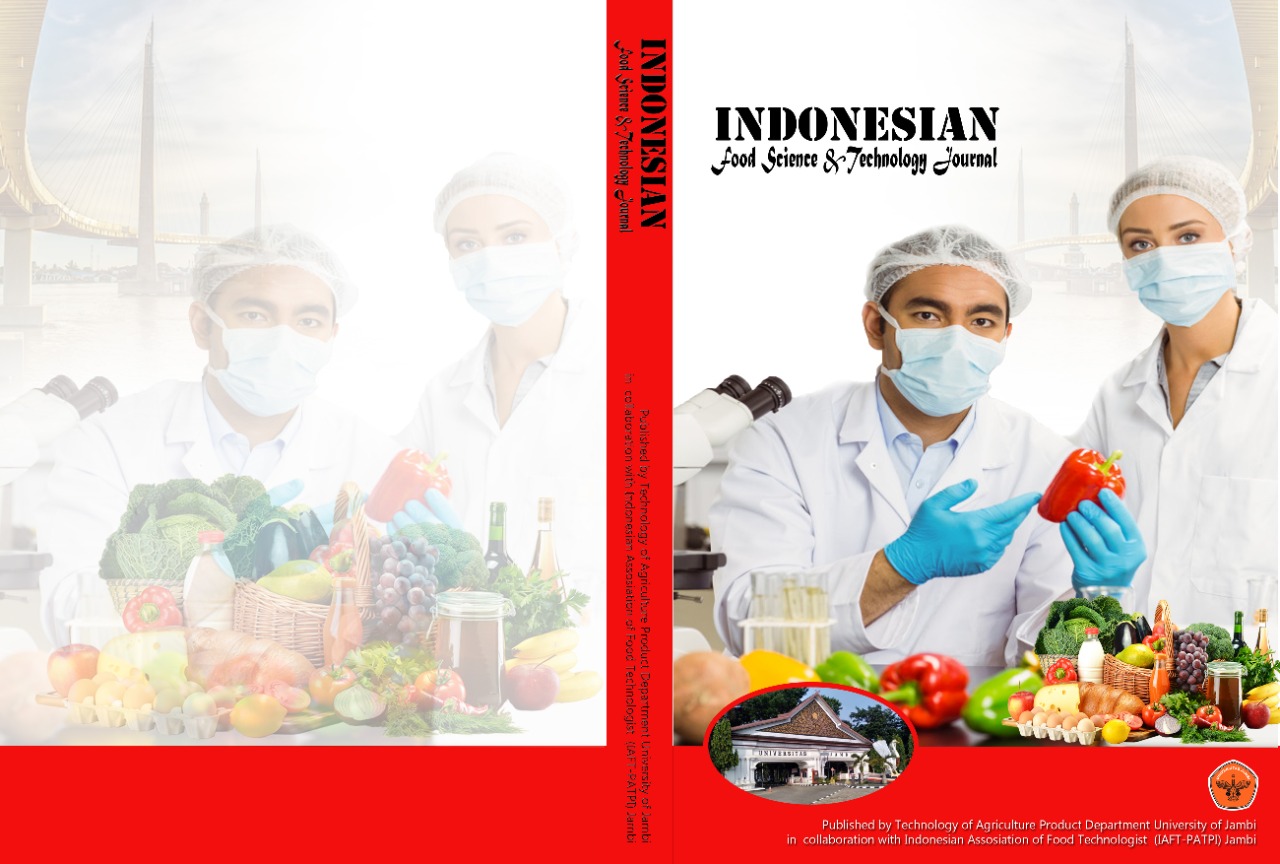Optimization of Spray Drying Process Parameter Condition for Theaflavin Extract from Black Tea (Camellia sinensis) Using Response Surface Methodology (RSM)
DOI:
https://doi.org/10.22437/ifstj.v8i1.33645Keywords:
theaflavin, black tea, spray drying, optimization, RSMAbstract
Black tea theaflavins contain high antioxidants that can be protective agents against SARS-CoV-2. The relatively good process conditions in spray drying are predicted to be able to protect and maintain the storage stability of theaflavin bioactive compounds by encapsulation. Therefore, this study aims to obtain optimum process conditions in spray drying black tea theaflavin extract. The analyzed data were interpreted using response surface methodology (RSM) with the independent variables used including spray drying inlet air temperature (100 oC, 120 oC, 140 oC) and extract to maltodextrin ratio (1:0.40; 1:0.80; 1:1.20 (v/v)). The resulting black tea powder was analyzed for theaflavin content by UV-Vis spectrophotometer (380 nm), moisture content by moisture analyzer, particle size by scanning electron microscopy (SEM), and yield. The optimum condition was reached at an inlet air temperature of 116oC and a ratio of black tea extract to maltodextrin 1:0.6627 (v/v) which resulted in R-square for yield, moisture content, and theaflavin content of 0.8946; 0.8016; 0.9324 respectively. The best theaflavin storage stability results were achieved in the seventh experiment with operating conditions of inlet air temperature 120oC and extract to maltodextrin ratio 1:0.23431 (v/v), obtained theaflavin content ranged from 0.37125% - 0.52650% from day 0 to day 30.
Downloads
Downloads
Published
How to Cite
Issue
Section
License
Copyright (c) 2024 Indonesian Food Science and Technology Journal

This work is licensed under a Creative Commons Attribution 4.0 International License.







